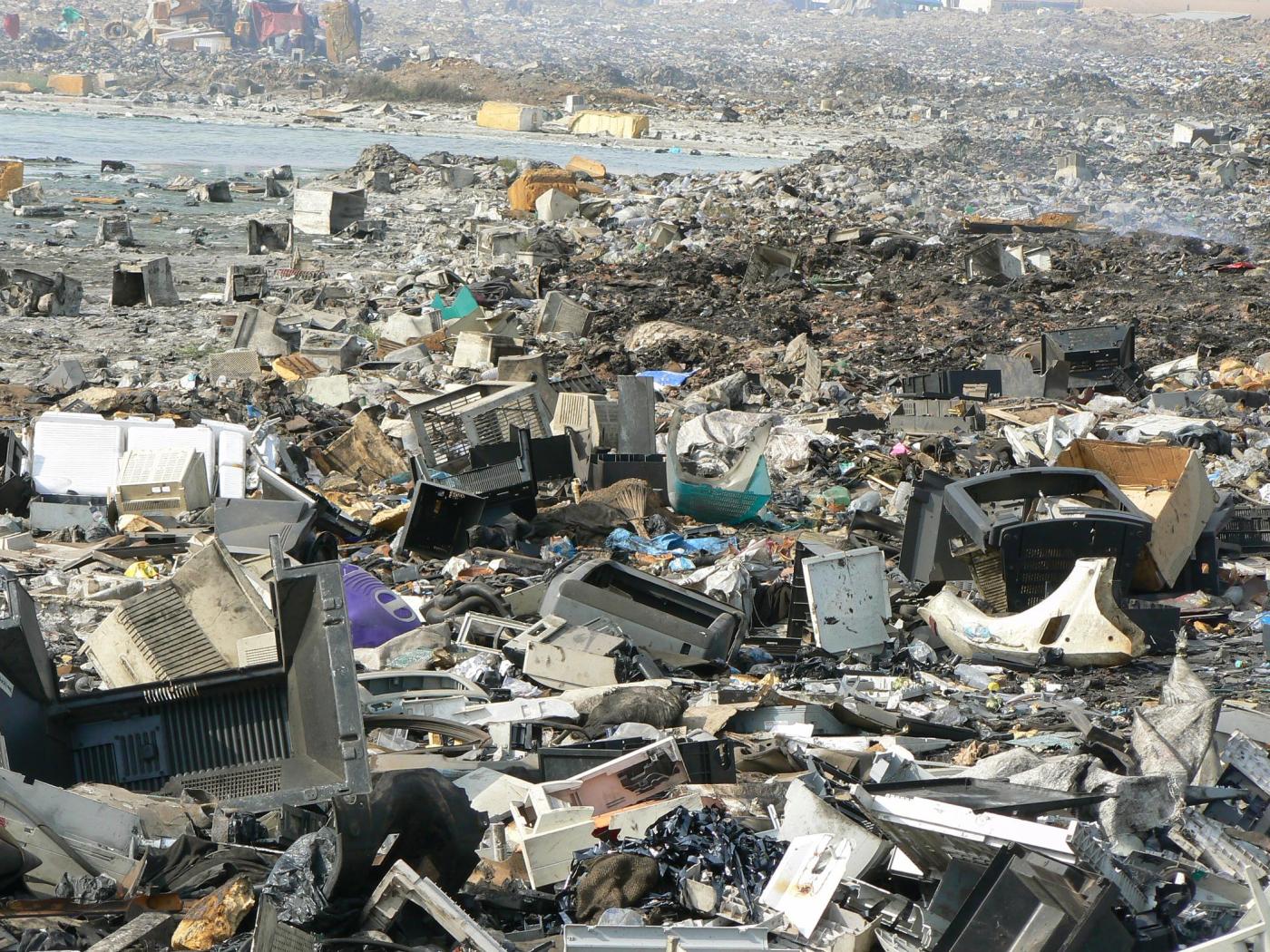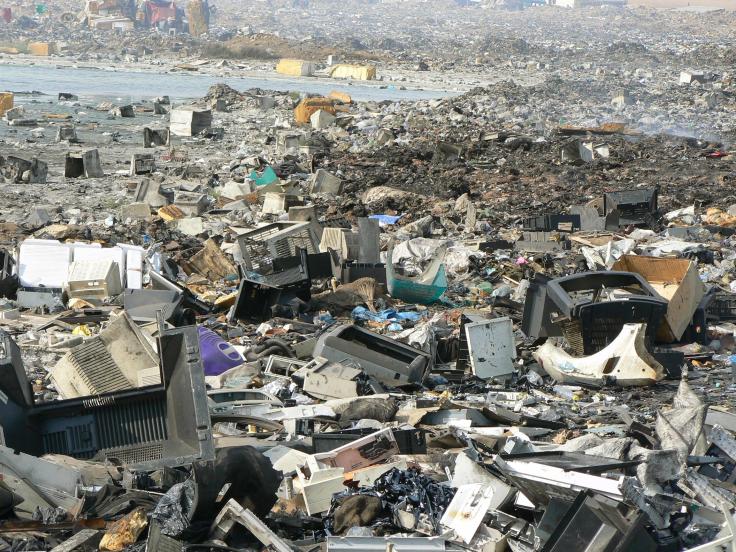By Seth Dixon, Ph.D., Associate Professor of Geography, Rhode Island College
The world is increasingly going hi-tech. Many people in our high consumption society want the latest and the greatest; last year’s much anticipated laptops and cell phones are miles behind the newest models that are coming out. So what happens with the old models? Even thrift stores are politely not accepting them as donations. Even some workable machines that were highly valuable 10 years ago are now functionally trash in our society. We can’t put it to the curb to end up in the landfill because of the lead, mercury, and other hazardous materials that can leak into the environment. This type of trash is what we call e-waste. The geography of e-waste is an ‘out of sight out of mind’ problem that we rarely think about but need to due to the ecological impacts of our collective consumption.

Throughout the developed world outdated electronic goods are sent to recyclers, but even that isn’t a guarantee that they will be disposed of safely; oftentimes they are sold overseas to be processed in the developing world. Over half of the e-waste from the United States is shipped overseas to places like China, India, or Africa, where the environmental regulation laws are not as strict as they are in the United States. Computers and other electronic gadgets are taken to be ‘recycled’ in a manner of speaking, but this recycling is in no way eco-friendly. Truckloads of e-waste are continually brought in to be processed. Intermingled in discarded old electronics are both hazardous elements that are hard to safely dispose of and valuable raw materials that can be extracted and repurposed. The plastics and rubber have no value, but the metals inside are highly prized since the scrap metal can still be resold.
This National Geographic Magazine article shows what happens at these e-waste dump sites (the accompanying photo gallery is equally mesmerizing and horrifying). The components are burned to remove the plastic and rubber so that they can extract the metal. Unfortunately, burning plastic, rubber, and other parts create toxic fumes. Lead, cadmium, dioxins, furans, arsenic, phthalates and other toxic pollutants are a regular part of the air, but now more and more toxins are being found in the water, soil and therefore food grown in the surrounding regions. As shown in this PBS Frontline episode one of these places is referred to by the locals as ‘Sodom and Gomorrah,’ alluding to the biblical locales that were destroyed.
Agbogbloshie, Ghana is home to the world’s largest e-waste dump site and this article from the Atlantic shows some of the environmental and social impacts of the e-waste trade. Places like Agbogbloshie have horrendous pollution problems from all of the chemicals released from the electronic graveyards. The burn areas are often very close, or even intermixed with residential communities. These communities have health problems such as very low life expectancies and high incidents of respiratory diseases since the air quality is so toxic.
So what can be done? Some argue that as soon as we recognize the profit in recycling, more companies will stop shipping e-waste abroad. Many companies recycle computers and e-waste in certified R2 programs (Responsible Recycling). Gizmogul is one in New England, but the website Sustainable Electronics can help you find a local recycler in your neighborhood.
The Electronic Afterlife from Gizmogul on Vimeo.
Find Seth on Twitter @ProfessorDixon.





Leave a comment